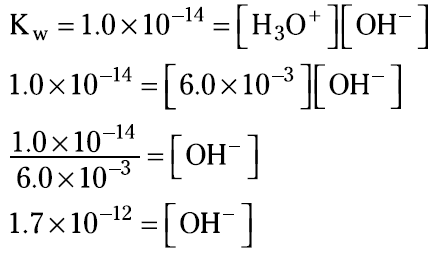

علم الكيمياء

تاريخ الكيمياء والعلماء المشاهير

التحاضير والتجارب الكيميائية

المخاطر والوقاية في الكيمياء

اخرى

مقالات متنوعة في علم الكيمياء

كيمياء عامة


الكيمياء التحليلية

مواضيع عامة في الكيمياء التحليلية

التحليل النوعي والكمي

التحليل الآلي (الطيفي)

طرق الفصل والتنقية


الكيمياء الحياتية

مواضيع عامة في الكيمياء الحياتية

الكاربوهيدرات

الاحماض الامينية والبروتينات

الانزيمات

الدهون

الاحماض النووية

الفيتامينات والمرافقات الانزيمية

الهرمونات


الكيمياء العضوية

مواضيع عامة في الكيمياء العضوية

الهايدروكاربونات

المركبات الوسطية وميكانيكيات التفاعلات العضوية

التشخيص العضوي

تجارب وتفاعلات في الكيمياء العضوية


الكيمياء الفيزيائية

مواضيع عامة في الكيمياء الفيزيائية

الكيمياء الحرارية

حركية التفاعلات الكيميائية

الكيمياء الكهربائية


الكيمياء اللاعضوية

مواضيع عامة في الكيمياء اللاعضوية

الجدول الدوري وخواص العناصر

نظريات التآصر الكيميائي

كيمياء العناصر الانتقالية ومركباتها المعقدة


مواضيع اخرى في الكيمياء

كيمياء النانو

الكيمياء السريرية

الكيمياء الطبية والدوائية

كيمياء الاغذية والنواتج الطبيعية

الكيمياء الجنائية


الكيمياء الصناعية

البترو كيمياويات

الكيمياء الخضراء

كيمياء البيئة

كيمياء البوليمرات

مواضيع عامة في الكيمياء الصناعية

الكيمياء الاشعاعية والنووية
Acting as either an acid or base: Amphoteric water
المؤلف:
John T. Moore, EdD
المصدر:
Chemistry Essentials For Dummies
الجزء والصفحة:
p 153
26-1-2017
1980
Acting as either an acid or base: Amphoteric water
Water can act as either an acid or a base, depending on what it’s combined with. Substances that can act as either an acid or a base are called amphoteric. If you put water with an acid, it acts as a base, and vice versa. For instance, when acetic acid reacts with water, water acts as a base, or a proton acceptor. But in the reaction with ammonia, water acts as an acid, or a proton donor.
But can water react with itself? Yes, it can. Two water molecules can react with each other, with one donating a proton and the other accepting it:

This reaction is an equilibrium reaction. A modified equilibrium constant, called the Kw (which stands for water dissociation constant), is associated with this reaction. The Kw has a value of 1.0 × 10–14 and has the following form:
1.0 × 10–14 = Kw = [H3O+] [OH–]
In pure water, the [H3O+] equals the [OH–] from the balanced equation, so [H3O+] = [OH–] = 1.0 × 10–7. The Kw value is a constant. This value allows you to convert from [H+] to [OH–], and vice versa, in any aqueous solution, not just pure water. In aqueous solutions, the hydronium ion and hydroxide ion concentrations are rarely going to be equal. But if you know one of them, Kw allows you to figure out the other one.
Take a look at the 2.0 M acetic acid solution problem in the section “Acetic acid and other weak acids,” earlier in this chapter. You find that the [H3O+] is 6.0 × 10–3. Now you have a way to calculate the [OH–] in the solution by using the Kw relationship:

 الاكثر قراءة في مقالات متنوعة في علم الكيمياء
الاكثر قراءة في مقالات متنوعة في علم الكيمياء
 اخر الاخبار
اخر الاخبار
اخبار العتبة العباسية المقدسة

الآخبار الصحية















 قسم الشؤون الفكرية يصدر كتاباً يوثق تاريخ السدانة في العتبة العباسية المقدسة
قسم الشؤون الفكرية يصدر كتاباً يوثق تاريخ السدانة في العتبة العباسية المقدسة "المهمة".. إصدار قصصي يوثّق القصص الفائزة في مسابقة فتوى الدفاع المقدسة للقصة القصيرة
"المهمة".. إصدار قصصي يوثّق القصص الفائزة في مسابقة فتوى الدفاع المقدسة للقصة القصيرة (نوافذ).. إصدار أدبي يوثق القصص الفائزة في مسابقة الإمام العسكري (عليه السلام)
(نوافذ).. إصدار أدبي يوثق القصص الفائزة في مسابقة الإمام العسكري (عليه السلام)


















